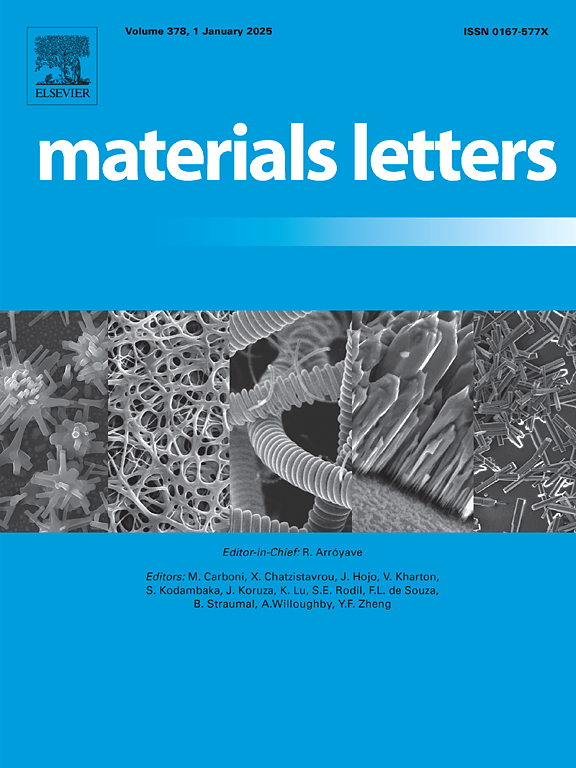碱活化玻璃废粉悬浮液的微波辅助冷固结
IF 2.7
4区 材料科学
Q3 MATERIALS SCIENCE, MULTIDISCIPLINARY
引用次数: 0
摘要
硼铝硅酸盐药用玻璃被认为是几种碱活性材料的原料。本论文旨在研究微波辅助工艺对碱活化材料硬化阶段的影响,而不是使用悬浮在温和碱性溶液(2.5 M, KOH)中并在仅40°C下干燥的细玻璃粉。结果表明,固化时间显著缩短,并对硬化机制产生了有趣的影响。稳定的压实是通过相邻颗粒的桥接实现的,而桥接又是由干燥时表面水合层的冷凝反应决定的。微波加热下的干燥促进了凝胶相的化学稳定性,凝胶相是由活化溶液中释放的玻璃组分反应形成的。事实上,这一过程增强了水合碳酸盐中碱离子的“捕获”。微波技术的应用减少了凝胶相内的解聚。此外,观察到活化材料在微波辐照下的机械抗压强度明显提高。本文章由计算机程序翻译,如有差异,请以英文原文为准。
Microwave assisted cold consolidation of alkali activated suspension of glass waste powders
Boro-alumino-silicate pharmaceutical glass has been considered as feedstock for several alkali activated materials. The present paper is intended to investigate the impact of microwave-assisted process on the hardening phase of alkali-activated materials, beyond the use of fine glass powders suspended in mild alkaline solution (2.5 M, KOH) and dried at only 40 °C. The results indicate a significant reduction in curing time, with interesting consequences on the hardening mechanism. Stable compacts are achieved through bridging of adjacent particles, in turn determined by condensation reactions at the surface hydrated layers, upon drying. Drying under microwave heating promotes the chemical stability of a gel phase, formed by reaction of glass components released in the activating solution. In fact, this process enhances the ‘trapping’ of alkali ions in hydrated carbonates. The application of microwave technology results in a reduction of depolymerization within the gel phase. Furthermore, it is observed that the mechanical compressive strength of the activated materials is notably improved when subjected to microwaved irradiation.
求助全文
通过发布文献求助,成功后即可免费获取论文全文。
去求助
来源期刊

Materials Letters
工程技术-材料科学:综合
CiteScore
5.60
自引率
3.30%
发文量
1948
审稿时长
50 days
期刊介绍:
Materials Letters has an open access mirror journal Materials Letters: X, sharing the same aims and scope, editorial team, submission system and rigorous peer review.
Materials Letters is dedicated to publishing novel, cutting edge reports of broad interest to the materials community. The journal provides a forum for materials scientists and engineers, physicists, and chemists to rapidly communicate on the most important topics in the field of materials.
Contributions include, but are not limited to, a variety of topics such as:
• Materials - Metals and alloys, amorphous solids, ceramics, composites, polymers, semiconductors
• Applications - Structural, opto-electronic, magnetic, medical, MEMS, sensors, smart
• Characterization - Analytical, microscopy, scanning probes, nanoscopic, optical, electrical, magnetic, acoustic, spectroscopic, diffraction
• Novel Materials - Micro and nanostructures (nanowires, nanotubes, nanoparticles), nanocomposites, thin films, superlattices, quantum dots.
• Processing - Crystal growth, thin film processing, sol-gel processing, mechanical processing, assembly, nanocrystalline processing.
• Properties - Mechanical, magnetic, optical, electrical, ferroelectric, thermal, interfacial, transport, thermodynamic
• Synthesis - Quenching, solid state, solidification, solution synthesis, vapor deposition, high pressure, explosive
 求助内容:
求助内容: 应助结果提醒方式:
应助结果提醒方式:


